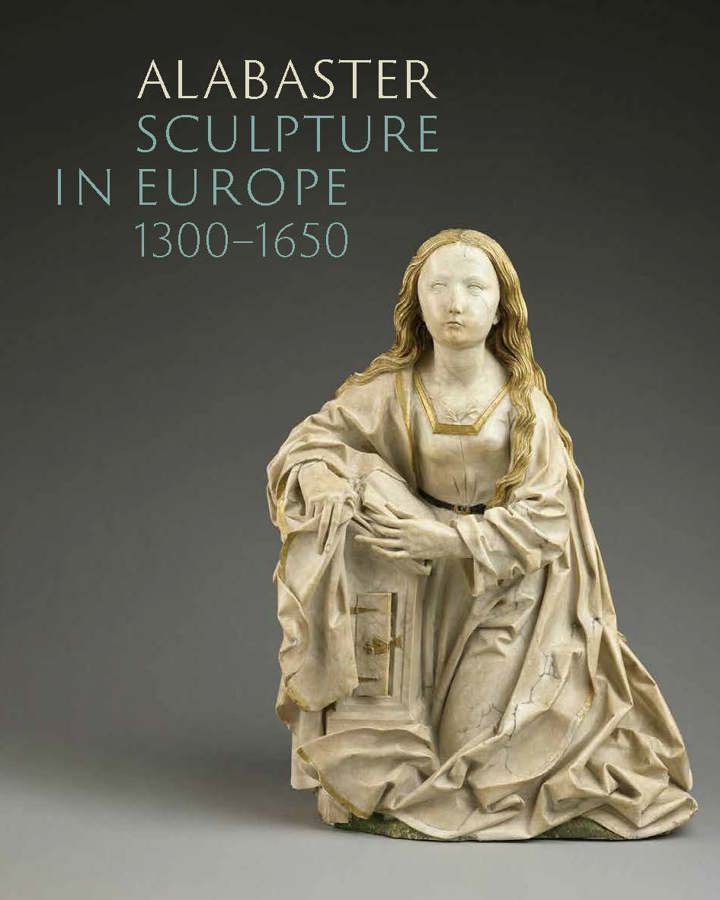
Alabaster Sculpture in Europe (1300-1650)
Marjan Debaene (ed)
- Pages: 312 p.
- Size:240 x 280 mm
- Illustrations:360 col.
- Language(s):English
- Publication Year:2022
- € 100,00 EXCL. VAT RETAIL PRICE
- ISBN: 978-1-912554-92-8
- Hardback
- Out of Print
The popularity of alabaster is illustrated by the many masterpieces preserved and on permanent display in major museums such as the Musée du Louvre in Paris, the British Museum and the V&A in London, the Metropolitan Museum in New York, the Rijksmuseum in Amsterdam and the Staatliche Kunstsammelungen in Berlin.
"Isotopic analysis of alabaster is still in its infancy, and new research in different areas will unquestionably bring about a better-informed understanding of the medieval and Renaissance alabaster sculptors’ work. This exceedingly handsome, scholarly book is a significant step in that direction." (NIGEL RAMSAY, Church Monuments, 37, 2023, p. 159)
“In short, everyone involved in creating this catalogue and the exhibition it records deserves praise. The volume covers a vast terrain, helpfully summarizing the current state of knowledge on a great many objects and providing a road map for further study by scholars and students of the material (and indeed of “materiality” writ large). In doing so, the catalogue provides a stellar example of the benefits of stepping outside of the intellectual taxonomies that so often constrain scholarship: our assumptions about the firmness of divisions between stylistic periods, geographic regions, and categories of objects. It compellingly demonstrates that those boundaries are far more permeable than they often might seem, and that they can distract us from important commonalities that transcend them.” (Stephen Perkinson, in Historians of Netherlandish Art Reviews, 09/2023)
Marjan Debaene is Head of Collections at Museum M in Leuven.
Alabaster was a popular material in European sculpture, especially from the fourteenth to the seventeenth century. Its relative availability and easy to sculpt characteristic made it a highly suitable material for both large monuments and small objects, for mass production and individual works, from England to Spain and France to the Netherlands, Germany and Poland. This material has been the subject of multidisciplinary research in various European countries for several decades. The research combines material analyses with historical and art-historical approaches. This publication, made for the occasion of the large exhibition on the theme at M Leuven opening on October 14th, brings together all renown specialists on the material and sheds light on the many facets of alabaster, such as its physical and chemical properties as well as its translucency, its whiteness, its softness, and its beautiful sheen, all of which made it a popular material used in different types of sculpture from the middle ages to the baroque, all throughout Europe, ranging from bespoke tombs, funerary monuments and commissioned sculptures and altarpieces to commercially interesting formulas such as English or Mechelen alabaster reliefs.
Foreword M Leuven
Peter Bary
Foreword Musée du Louvre
Laurence des Cars
Preface
Marjan Debaene and Sophie Jugie
1 Alabaster as a Material for Sculpture
Introduction
Sophie Jugie
Rhetoric of Alabaster: The Material between its Affordances and Cultural Meaning
Aleksandra Lipińska
How to Distinguish Alabaster from Alabaster: Tracing the Material Back from the Artwork to the Quarry
Wolfram Kloppmann
‘Marbre d’alabastre’: Status of the Interdisciplinary Research Project on Marble and Alabaster
Jude De Roy, Laurent Fontaine and Géraldine Patigny
Catalogue nos. 1–21
2 Funerary Sculpture
Introduction
Sophie Jugie
Alabaster as a Material for Funerary Monuments
Jessica Barker
Catalogue nos. 22–41
3 Alabaster Altarpieces
Introduction
Marjan Debaene and Michaela Zöschg
The Rimini Altarpiece and Alabaster Sculpture in the Southern Netherlands, around 1430
Stefan Roller
English Alabaster and the Continent
Lloyd de Beer
Alabaster Altarpieces in the Iberian Peninsula: From Gothic to Baroque
Carmen Morte García
Catalogue nos. 42–99
4 Sacred and Secular
Introduction
Michaela Zöschg and Marjan Debaene
The Head of St John the Baptist in Alabaster: The Object in Context
Soetkin Vanhauwaert
Catalogue nos. 100–126
Epilogue: Alabaster Mentalis, Trinitas Terrestris
Sofie Muller
Catalogue nos. 127–128
Bibliography
Index
Lenders to the Exhibition
Photographic Acknowledgements





